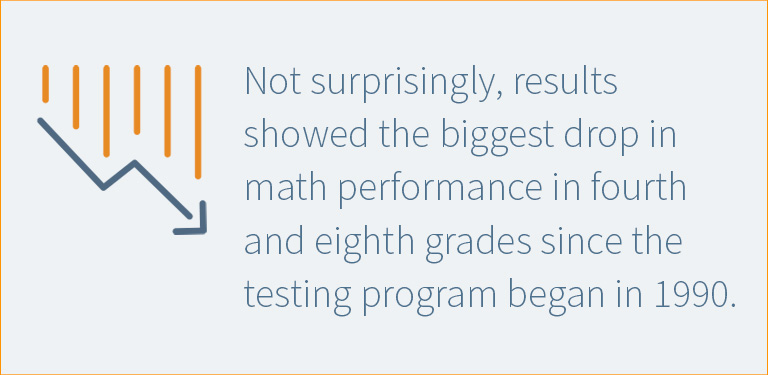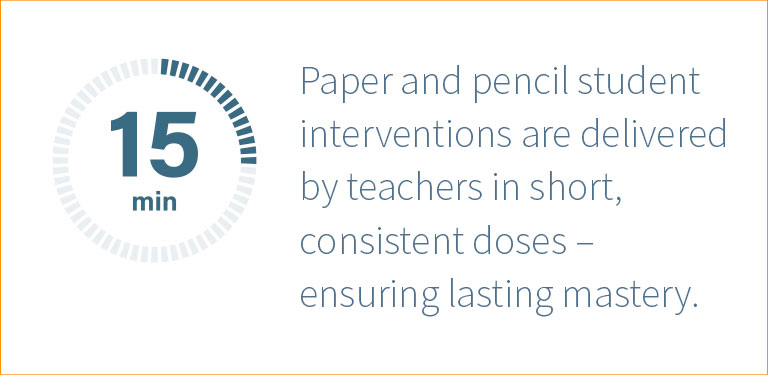Mathematical knowledge is a foundation for many areas of study, and math proficiency is a strong predictor of a student’s future success. For instance, in a 2011 study, researchers found that K-5 students with consistently low math skills were much less likely to graduate from high school or attend college.
For students who are particularly talented in math, the results are equally as important. As stated in a 2015 Scientific American article by Amber Williams, "For both males and females, mathematical precocity early in life predicts later creative contributions and leadership in critical occupational roles.”
In short, math achievement is a key driver of success. Proficiency in math opens many more pathways for the future, while students who struggle in this subject have fewer opportunities. Ensuring that all students have an equal chance at success, therefore, hinges on effective math instruction.
Key components for student math equity
What are the conditions needed for students to have equitable learning opportunities in math? Here are two key elements that are critical for student success:
High-quality instruction
All students deserve access to high-quality math instruction. Every child has the right to be taught by a well-trained and certified teacher who uses proven curriculum materials and pedagogies grounded in the science of math. High-quality instruction is driven by student achievement data, with teachers working in teams to analyze student data and differentiating instruction based on students’ individual learning needs. High-quality instruction also relies on teachers receiving frequent, ongoing professional learning opportunities to ensure they’re using the most up-to-date and effective methods.
Targeted support
When students fail to make adequate progress in math, educators need to identify those students’ struggles early on and offer the support required to get them back on track. Assessing students’ skills at regular intervals can help teachers do this effectively. Aside from the formative assessments that are used to monitor student learning and the summative assessments used to measure growth and mastery of content, universal screenings two to three times per year can help teachers quickly identify students who are struggling with grade-level skills to pinpoint further intervention. Teachers can use screening results as well as other assessment measures to determine students' specific academic needs and follow up with highly targeted interventions that deliver just the right instruction for success. Administering regular and frequent progress-monitoring measures that are directly tied to the prescribed interventions can help teachers ensure that interventions are having the desired effect. This combination of targeted strategies can help ensure that instructional activities are appropriately matched for each student’s needs.
Although the NAEP scores for all subgroups declined, the gaps between various student groups have increased in size during the pandemic. Although 25% of fourth-graders overall failed to meet even the “basic” level of math proficiency, there were significant gaps between Asian (10%) and white (14%) students and those from other subgroups such as black (45%), Native American (41%) and Hispanic (36%).
These figures demonstrate the urgency of coming together to address equitable math learning opportunities.
How SpringMath uniquely supports math equity and access
A properly implemented Multi-Tiered System of Supports (MTSS) creates an early intervention system that can advance student growth and enhance equity by addressing long-standing barriers to student progress. SpringMath is a complete MTSS system for math instruction that can address inequitable outcomes among student groups by promoting data-based decision making and early intervention. Through such an approach, SpringMath helps ensure that struggling students get the support they need for success.
The program assists teachers in identifying the learning gaps in students’ math skills, regardless of their background or group affiliation. Through a classwide approach, as well as individual intervention, SpringMath uniquely monitors each student for growth on a continuum of grade-level skills. If the system finds that a student isn’t making their expected growth, it will provide a new pathway for that student to find success.
SpringMath easily identifies individual students or entire classes who require extra support, helping educators deliver the precise intervention(s) they need to achieve mastery. Students who receive interventions have their progress monitored on a weekly basis so that adjustments can be made to address their needs more effectively.
Using the data-informed instruction offered by SpringMath, teachers can more successfully close achievement gaps and ensure that all students receive the high-quality instruction and intervention needed for proficiency.
“Educational equity means that every student has access to the educational resources and rigor they need at the right moment in their education across race, gender, ethnicity, language, disability, sexual orientation, family background and/or family income.”
- 2018 Council of Chief State School Officers
Minimizing adverse impact
In 2018, the Council of Chief State School Officers published a brief titled “States Leading for Equity: Promising Practices Advancing the Equity Commitments.” In this document, the organization wrote: “Educational equity means that every student has access to the educational resources and rigor they need at the right moment in their education across race, gender, ethnicity, language, disability, sexual orientation, family background and/or family income.”
High-quality math instruction is critical to achieving this equity, and SpringMath has been proven effective in reaching this goal. Studies of SpringMath have demonstrated that over time, disparities across student groups are reduced as students who are struggling in math are identified and caught up through customized learning plans. In fact, in a random controlled trial, students who experienced SpringMath saw significant math gains —including a 30% gain among special-education populations.
To learn more about how SpringMath is an invaluable resource for advancing student equity and access in math, talk to one of our experts.




